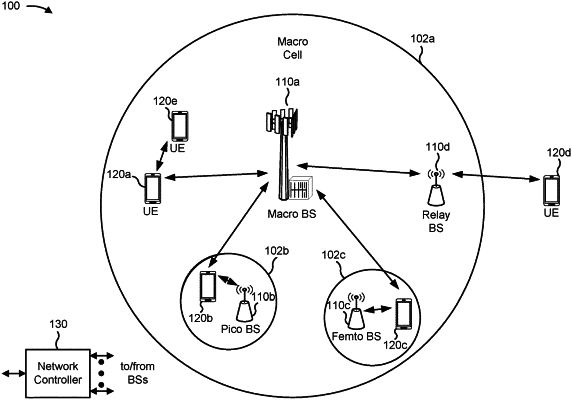| CPC H04W 72/02 (2013.01) [H04L 5/0051 (2013.01); H04L 27/2607 (2013.01); H04W 72/0446 (2013.01); H04W 72/0466 (2013.01); H04W 72/541 (2023.01)] | 30 Claims |

|
1. A method of wireless communication performed by a base station, comprising:
determining one or more signaling parameters to be used to transmit a plurality of reference signals that identify the base station in association with remote interference management, wherein the one or more signaling parameters include:
multiple time periods in which the plurality of reference signals are to be transmitted, and
a plurality of mini-bands, within one or more sub-bands, in which the plurality of reference signals are to be transmitted,
wherein each mini-band, of the plurality of mini-bands, has a same mini-band index and a different sub-band index, and
wherein the multiple time periods include multiple slots, multiple mini-slots, multiple sets of symbols, multiple subframes, or multiple frames; and
transmitting the plurality of reference signals using the one or more signaling parameters to identify the base station in association with remote interference management.
|